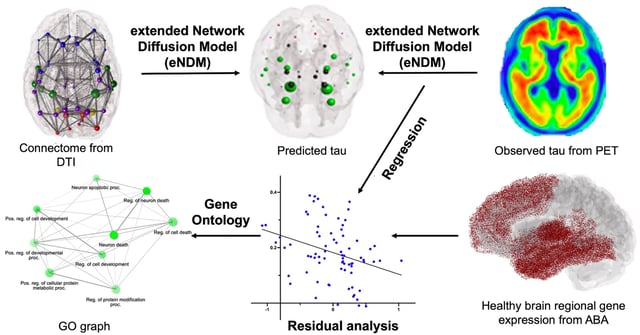Overview
- The study applied the extended Network Diffusion Model to tau PET scans and structural connectivity data from 196 participants to predict tau propagation and compute ‘residual tau’ values.
- Correlation with Allen Human Brain Atlas gene expression maps enabled identification of four gene categories—network-aligned and network-independent vulnerability or resilience—that govern regional susceptibility to tau aggregation.
- Genetic drivers of vulnerability were linked to stress response, metabolic processes, and programmed cell death, whereas resilience genes were associated with immune function and amyloid-β clearance.
- Directional analysis confirmed that tau spreads trans-synaptically along axonal pathways with a retrograde bias, challenging the notion of passive extracellular diffusion.
- These findings establish a data-driven framework for targeted exploration of molecular pathways and potential intervention points in Alzheimer’s disease tauopathy.

